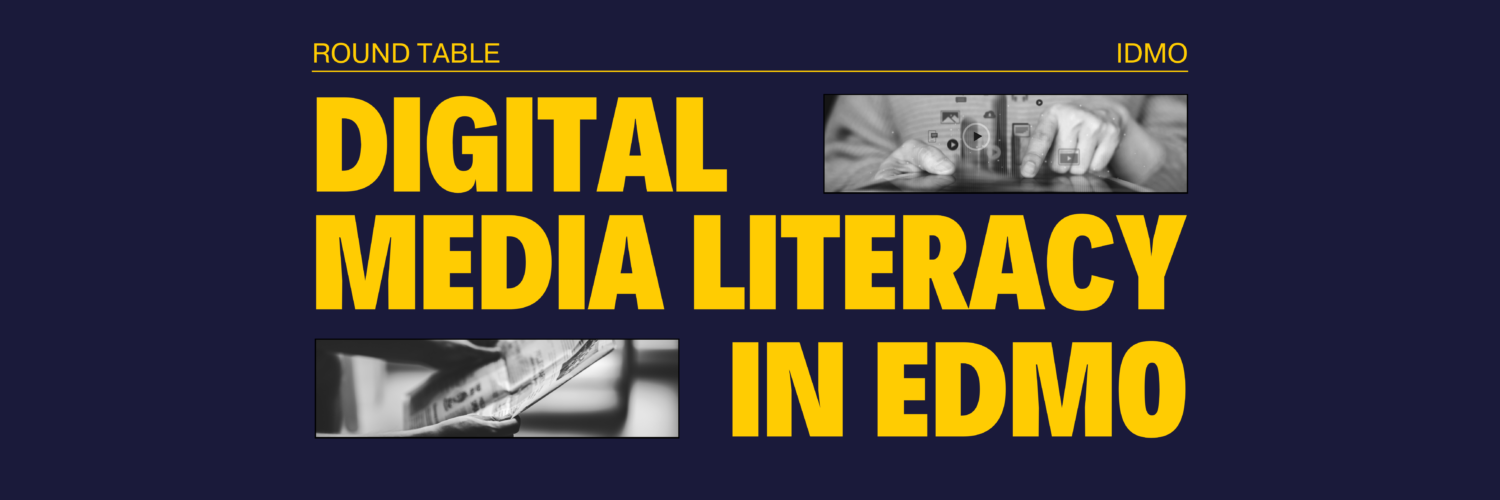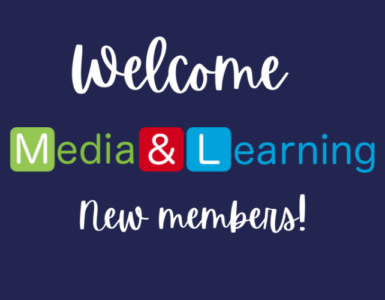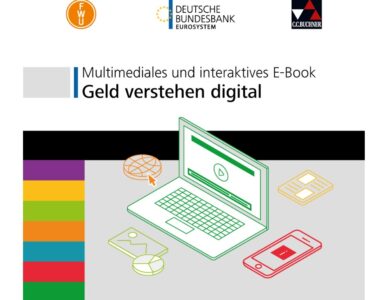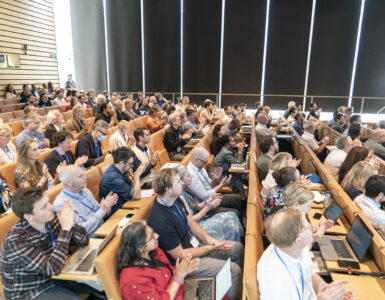This interview is part of the ”Digital Media Literacy in EDMO Round Table’‘ interview series that is published every month to highlight the work of the 14 EDMO hubs.

IDMO, Salvatore Custureri, LUISS DataLab, Italy.
Who are the leading players in the IDMO region when it comes to promoting media literacy?
The main actor, which is important to mention, is obviously the Ministry of Education, in coordination with the Regional School Offices (USR) and the Safer Internet Centre “Generations Connected” (SIC), which carry out their activities within the framework of the different Actions that articulate the National Digital School Plan (PNSD), indicators related to the curricula or the areas of competence of the SIC232. These are mainly those calls under the PNSD that provide access to the specially allocated economic resources needed to initiate and support the school’s digitization processes. These processes are of both a purely infrastructural and technological nature and aimed at educational innovation, the development of digital skills and the promotion of Media Information Literacy.
A second important set of institutional actor are the Regional Communication Committees (Corecoms) 236 (13 projects). Corecoms, in fact, perform a protective function vis-à-vis minors with respect to the communications system on the dual front of audiovisual (especially local) and new technologies, and in several cases have developed particular attention to interventions of a media-educational nature. Among the initiatives surveyed, of particular note is the presence of the Corecoms of the regions of Abruzzo, Basilicata, Calabria, Emilia-Romagna, Lazio, Lombardy, Molise, Piedmont, Sicily, and Tuscany, as well as some projects that report directly to the Communications Guarantee Authority (Agcom). A coherent theoretical framework is also present in initiatives developed by now institutionalized actors in the fields of media educational research and practice, child advocacy and education.
Alongside Corecom, many other actors provide media educational and technology-driven expertise, whether in the form of projects aimed directly at younger children and students, or in the form of training courses for teachers, or – finally – in the form of educational materials, resources and support videos for educators and schools. This is the case with entities such as CEM (Center for Media Education), Cremit, Dataninja School, Factcheckers, Carolina Foundation, Lime Education, MED, WE Turtle, Talent, and Zaffiria. Each of these realities has behind it not only a more or less long tradition rooted in the history of Italian Media Education, but also a reference to the theoretical frameworks of Media Literacy, Media and Information Literacy, Digital Literacy and Data Literacy developed by the international scientific literature. They contribute on these bases to the territorial projects that from time to time are activated in partnership with educational institutions and institutions, for example in the case of the many collaborations with the Corecoms of the different Italian regions. Other important players are NGOs, such as Save the Children, which, especially in relation to campaigns aimed at combating educational poverty, has involved many local entities in projects aimed at reducing the digital divide and fostering the development of digital skills.
Do you have any idea as to how media-literate people in this region are generally? Are there any types of measures that can be used to assess this over time?
Media literacy in Italy, as in many other countries, varies widely among the population. It’s challenging to provide a single assessment of media literacy for an entire nation because it depends on various factors such as education, socioeconomic status, age, and access to information. However, I can provide some general observations:
Education: Italy has a relatively high literacy rate, which is a positive indicator for media literacy. However, media literacy education is not always integrated into the formal curriculum, and the quality and extent of media literacy programs can vary from region to region.
Digital Divide: There is a digital divide in Italy, with urban areas generally having better access to the internet and digital resources than rural areas. This can impact media literacy, as those with limited internet access may have less exposure to online information and less opportunity to develop digital literacy skills.
Age: Younger generations tend to be more media literate than older generations, especially when it comes to digital media. This is because younger people have grown up with technology and are more accustomed to navigating digital platforms.
News Consumption: Italians generally have a strong tradition of news consumption, with a variety of newspapers and television channels. However, media literacy is crucial for distinguishing between reliable and unreliable sources, especially in the age of social media.
Government Initiatives: The Italian government has recognized the importance of media literacy and has taken steps to promote it through initiatives and awareness campaigns. However, the impact of these efforts can take time to manifest.
To assess media literacy over time, several measures can be used:
Surveys: Conducting regular surveys to gauge people’s knowledge of media literacy concepts, their ability to discern credible sources from misinformation, and their critical thinking skills when evaluating media content.
Education Programs: Tracking the implementation and effectiveness of media literacy programs in schools and communities can provide insights into improvements or gaps in media literacy over time.
Media Consumption Patterns: Analyzing how people consume news and information, including their reliance on social media and the spread of misinformation, can help assess changes in media literacy.
Media Literacy Campaigns: Monitoring the reach and impact of government or nonprofit media literacy campaigns can offer insights into their effectiveness in raising awareness and improving media literacy skills.
Digital Literacy Metrics: Tracking digital literacy indicators, such as the ability to navigate online platforms, discern credible sources, and protect against online threats, can be used to assess media literacy in the digital age.
Assessing media literacy over time is a complex task, but a combination of these measures can provide a more comprehensive understanding of how media literacy is evolving in Italy and where there may be opportunities for improvement.
What are the main challenges you face in promoting media literacy in Italy?
Here are some insights into the main challenges faced in promoting media literacy in Italy.
Limited Awareness: One of the primary challenges is the relatively low level of awareness about the importance of media literacy among the general public in Italy. Many people may not fully understand the concept or its relevance in the digital age.
Digital Divide: Italy, like many other countries, faces a digital divide, which means that not everyone has equal access to digital technologies and the internet. This can hinder efforts to promote media literacy, as access to online resources and training is essential.
Language and Cultural Diversity: Italy has a rich cultural and linguistic diversity. Different regions may have different media landscapes and challenges. Tailoring media literacy programs to suit these diverse needs can be a challenge.
Disinformation and Misinformation: Italy, like many other countries, has been grappling with the spread of disinformation and misinformation, especially through social media. Teaching people how to identify and counter these falsehoods is a key component of media literacy but can be challenging given the constantly evolving nature of online content.
Education System Integration: Integrating media literacy into the formal education system can be a challenge. Curriculum development and teacher training may be required to ensure that media literacy skills are taught effectively.
Lack of Regulation: There may be a lack of regulation or guidelines regarding media literacy initiatives in Italy. Clear policies and standards can help drive the development and implementation of media literacy programs.
Resource Constraints: Limited funding and resources for media literacy initiatives can impede their reach and effectiveness. Developing and maintaining educational materials, workshops, and awareness campaigns require financial support.
Changing Media Landscape: The media landscape is rapidly evolving, with new technologies and platforms constantly emerging. Keeping media literacy programs up-to-date and relevant in this dynamic environment can be a challenge.
Skepticism and Resistance: Some individuals may be skeptical of media literacy efforts or resistant to the idea of critical thinking about media content. Convincing people of the importance of these skills can be challenging.
Engaging with Older Generations: Educating older generations, who may be less familiar with digital technologies and online media, is essential but can be more challenging than reaching out to younger, tech-savvy individuals.
To address these challenges, a comprehensive and coordinated effort involving government agencies, educational institutions, media organizations, and civil society is essential. It’s also important to continually adapt strategies to keep pace with changes in the media landscape and technology.
What value do you think EDMO and the network of EDMO hubs in particular bring to the challenge of fighting disinformation and promoting media literacy in this region?
EDMO and its network of hubs bring to the challenge of fighting disinformation and promoting media literacy in the region:
1. Data Collection and Analysis: The network of hubs help gather and consolidate information from different regions in Europe, providing a more comprehensive view of disinformation trends. This data can inform evidence-based policymaking and awareness campaigns.
2. Research and Monitoring: EDMO hubs conduct research on disinformation campaigns, their sources, and their impact. This research can help identify emerging threats and vulnerabilities, allowing for more effective countermeasures.
3. Capacity Building: EDMO and its hubs play a crucial role in building the capacity of various stakeholders, including journalists, educators, and the general public, to recognize and combat disinformation. They provide training and best practices for media literacy and critical thinking.
4. Information Sharing and Collaboration: The network of EDMO hubs facilitate collaboration and information sharing among different European countries. This can lead to the development of common strategies and tools for countering disinformation, as well as the sharing of successful practices.
5. Policy Recommendations: EDMO and its hubs generate policy recommendations based on their research and analysis. These recommendations can guide governments and regulatory bodies in crafting effective policies to combat disinformation and promote media literacy.
6. Public Awareness: Through campaigns and initiatives, EDMO and its network raise public awareness about the dangers of disinformation and the importance of media literacy. They help empower individuals to critically assess the information they encounter online.
7. Cross-Border Collaboration: Disinformation often crosses national borders, making it a transnational issue. EDMO’s network of hubs facilitate cross-border collaboration and coordination to address disinformation campaigns that target multiple countries.
It’s important to note that the effectiveness of EDMO and its network of hubs in combating disinformation and promoting media literacy will depend on various factors, including funding, collaboration with other organizations, and the ability to adapt to evolving disinformation tactics.
What types of media literacy activities have been organised by IDMO since it was set up?
Here are some of the activities from several IDMO partners (TIM/RAI/NEWSGUARD):
- “Media Literacy versus Fake News”: cognitive research of the school’s innovative experiences in the field of media literacy (Ufficio Studi and Università Cattolica di Milano) Released: published 10th May 2022
- “Digital Media Literacy gaps and needs”: survey launched on February 2023 to 158 schools in cooperation with TIM, T6, LUISS, and with institutional support (MIM)
- 5 EPISODES of 30 minutes each, spin-off of the TV programme “Invitation to reading” Released: 26th June 2022. On air: 13-17 June 2022 (Rai Scuola); 20-25 June 2022 (Rai3); from 20 June 2022 (RaiPlay)]. 3.300.685 total reaches – 1.128.375 total audience
- 4 SPECIAL EPISODES of 30 minutes each of the TV programme “Digital World”
- “Digital in a Nutshell”: Three literacy campaigns, consisting of 10 pills each:
- 1st series (2’) + a special nutshell (1’). Released 15th March. On air: April 2nd – June 30th 2022 (2.600 Tv broadcast – 272.712.687 total reaches
- 2nd series (1’). Released 26th October. On air : November 18th – February 4th 2023 (2.260 Tv broadcast – 280.076.575 total reaches
- 3rd series (1’). In progress. Expected release: August 2023. On air: September 2023.
- Webinars and online question-time with schools and RAI journalists and correspondents: 29 online meetings, 4502 students in total (from February 2022 to March 2023).
- Local workshops on media literacy to foster the use of the IDMO tools by journalists and civil society: 5 workshops held 1 in progress : 1) Rome, December 2023, Fiera del libro “Più libri più liberi”
As part of NewsGuard’s media literacy program, we provide libraries with media literacy resources that help guide learners of all ages through the overwhelming landscape of online news and information. More than 800 public libraries globally use NewsGuard’s browser extension on their computers.
In 2022, we participated in multiple media literacy seminars for secondary school and university students, including:
- Classes on disinformation (organized in two main sessions) to 18 secondary schools in Italy;
- University of Padua, seminar for students of Journalism;
- University of Padua, seminar for students of Media Analysis;
- University of La Sapienza, Rome, seminar for students of Communications, Marketing, and Journalism.
In 2023, TIM updated its media literacy strategy for secondary school students and teachers to align with the latest trends in media communication and to increase student engagement.
The format of “Appointment with Digital Media” has been revamped. Three main refinements were made:
- two out of four planned events were held both in-person and fully digital, to stimulate interaction with students
- the in-person events involved guests with appeal to the youth target audience
- contents were updated to place greater emphasis on artificial intelligence and its use in media communication
What plans do you have in relation to media literacy for the next 12 months for IDMO?
For the next 12 months, we have ambitious and groundbreaking plans in store for the Observatory’s efforts in media literacy. Our primary focus will be on expanding our reach and impact in promoting media literacy across the region. We will continue to work closely with our network of partners, stakeholders, and experts to design and implement innovative initiatives aimed at enhancing digital literacy and critical thinking skills among diverse audiences.
Key highlights of our plans for the next 12 months include:
1. Advanced Research and Analysis: We will further deepen our research and analysis capabilities to gain deeper insights into evolving disinformation trends. This will enable us to develop more effective countermeasures and targeted educational content.
2. Cross-Border Collaboration: We will intensify our collaboration with international organizations, national authorities, and civil society groups to foster cross-border cooperation in the fight against disinformation. This will facilitate the sharing of best practices and the pooling of resources for maximum impact.
3. Enhanced Educational Programs: We are committed to enhancing our media literacy and critical thinking programs. These initiatives will be tailored to the specific needs of different demographics, including educators, students, journalists, and the general public.
4. Innovative Technology Solutions: We will explore cutting-edge technology solutions to combat disinformation and promote media literacy, including the development of tools and platforms that empower individuals to navigate the digital landscape safely.
5. Policy Advocacy: Our second round will involve active advocacy for evidence-based policies aimed at countering disinformation. We will engage with policymakers to ensure that our recommendations are considered in shaping the regulatory framework.
6. Public Awareness Campaigns: Expect impactful public awareness campaigns that will educate and empower individuals to critically evaluate information sources, recognize disinformation, and make informed decisions in the digital age.
7. Continuous Evaluation and Feedback: We are committed to a dynamic approach that involves continuous evaluation of our efforts. Feedback from our stakeholders and the communities we serve will be instrumental in refining and improving our strategies.
While these are just a glimpse of what’s to come, we can assure you that our second round of the Observatory will bring significant advancements in the fight against disinformation and the promotion of media literacy.

Salvatore Custureri, Ph.D., Project Manager – LUISS DataLab – Italian Digital Media Observatory PostDoc Research Fellow – Project Management – Political Science Department, LUISS University, Italy














